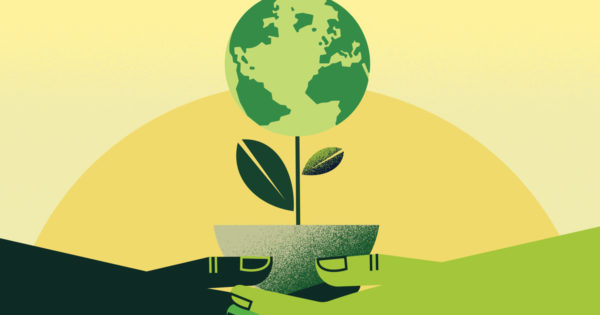Climate news is rarely cheery these days. The harm global warming is doing to the planet will take a lot of work to slow down and mitigate.
With that caveat, we wanted to highlight a few of the bright spots from 2022 when it comes to the advertising industry’s response to climate change. Because amid the gravity of the crisis, there’s important work worth celebrating.
Ad Net Zero goes global
In January, Ad Net Zero will launch a U.S.-based chapter, taking its mission global. The group, created by the Advertising Association in 2020, aims to catalyze “immediate, collective industry action to help achieve real net zero carbon emissions from the development, production and media placement of advertising by the end of 2030,” according to a statement from its launch.
As it expands globally, Ad New Zero faces challenges to the scope of its mandate. Other climate-focused industry groups, including Purpose Disruptors and Clean Creatives, are urging the industry to assess the impact of its work beyond the operational footprint—something to keep an eye on in 2023.
Lawmakers fund green investment and ban fossil fuel ads
The past year saw some big policy moves that will change the marketing landscape in 2023. First, the Inflation Reduction Act, passed in the U.S. in August, allocated funding toward electric vehicles and renewable energies that’ll help brands and consumers transition away from climate-harming modes of transportation and energy consumption.
In other parts of the world, policymakers moved to restrict certain kinds of advertising based on how the products impact the climate. For example, France, Australia and the Netherlands have banned ads that promote fossil fuel products because of their outsized role in global warming.
More than 200 agencies ditch fossil fuel clients
Clean Creatives, the activist campaign by Fossil Free Media that aims to cut off the fossil fuel industry from the best creative work, doubled the number of agencies on its pledge list this year.
Notably, the group added its first agency owned by a major holding company: Havas-owned and New York City-based branding shop Triptk signed the Clean Creatives pledge in 2022, one of 243 agencies that signed this year, bringing the total to 465.
Cannes Lions adds sustainability requirements
To win a Cannes Lion, agencies now must think about the carbon footprint of their production process and the sustainability impact of their work. All entries for 2023 will require applicants to include this information for the first time, the group announced this year at the ANA Masters of Marketing Conference. It’s part of a broader focus on sustainability that the festival will be unveiling in January, according to a spokesperson.
The changes come after protests descended on the 2022 festival, with groups including Greenpeace, Clean Creatives and Creatives for Climate pushing for a stronger response from the industry to the ongoing climate crisis.
Brands begin to embrace circularity
An economy that relies on disposability can’t be undone overnight, and creating a new way of operating requires a lot of work and imagination. But throughout 2022, brands old and new began to shift toward a circular economy in earnest—setting goals to reduce waste along their supply chains and making plans for their products’ end of life.
In fashion, that’s best evidenced by the exciting developments in textile production and recycling, as well as the explosive growth of branded resale. Companies like For Days, unspun, Tommy Hilfiger and SuperCircle are reimagining garment production, use and end of life—charting a path forward for an industry with a massive carbon and waste footprint.
Source link





